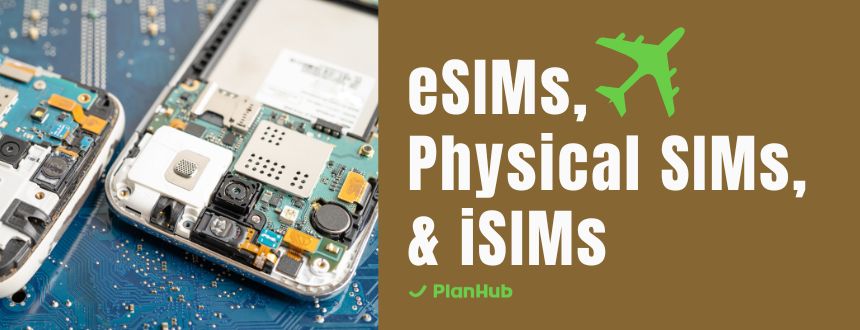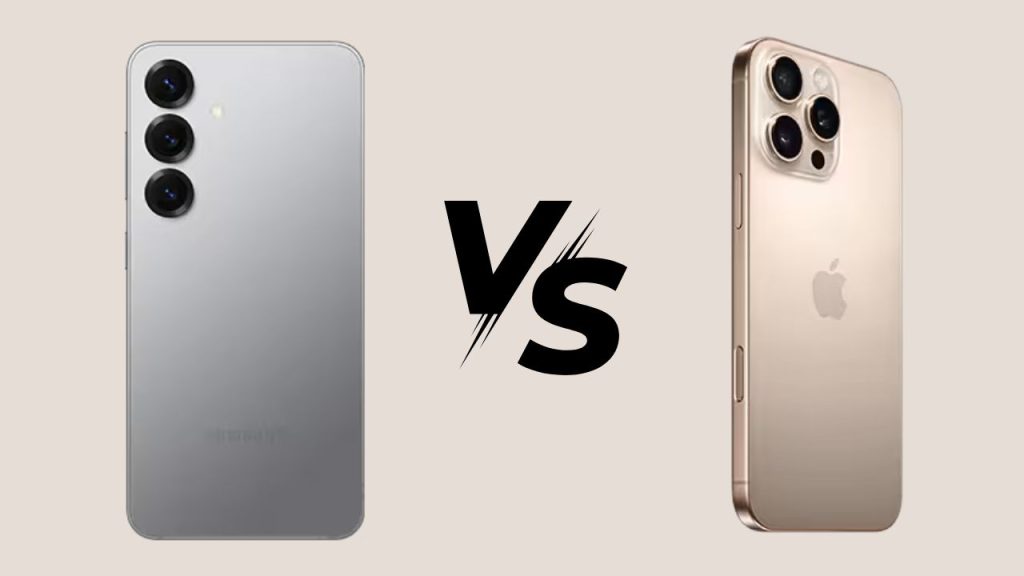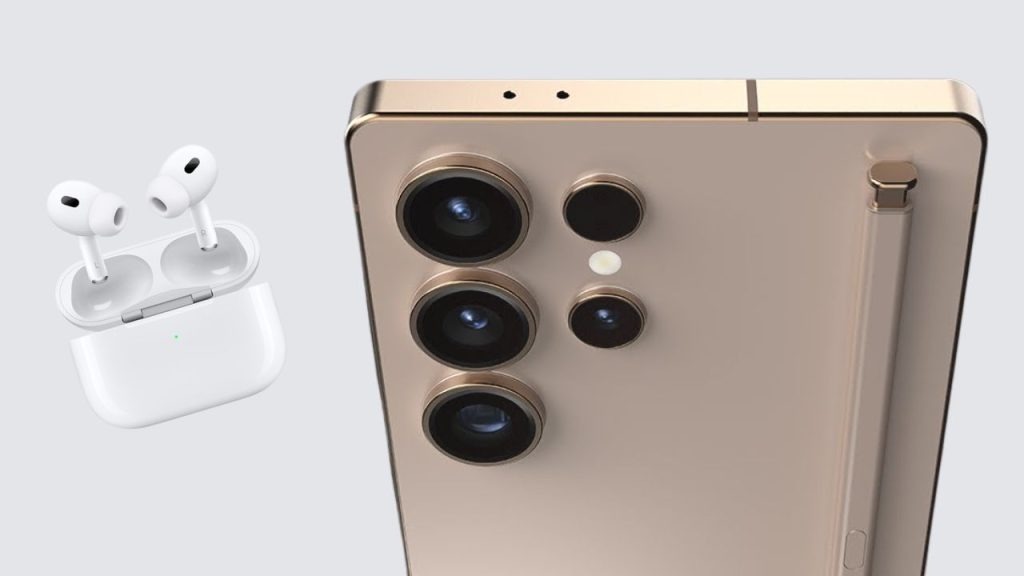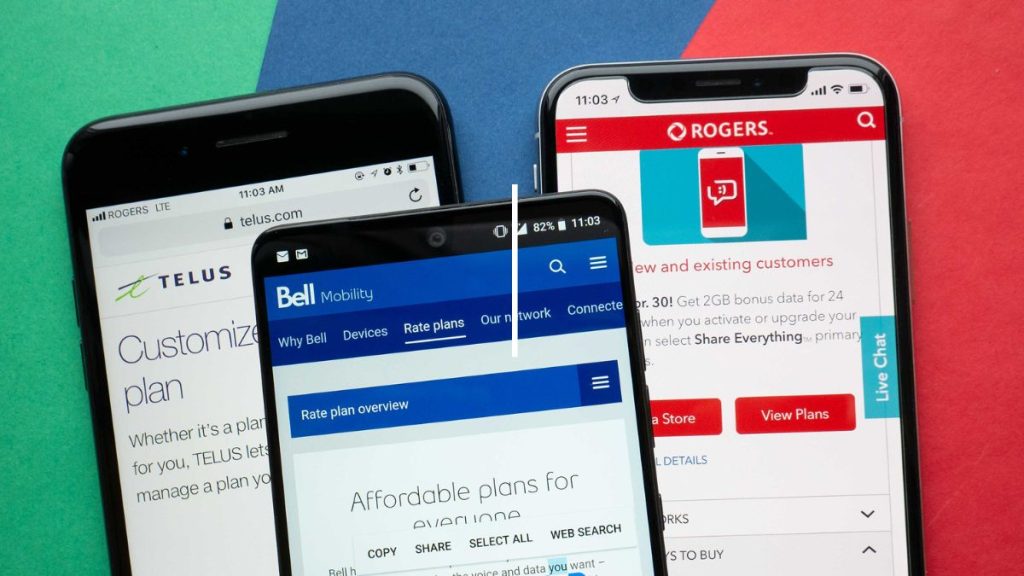Don’t want to lose mobile connectivity when you travel out of the country? You need a SIM card issued by a provider that offers service in your destination. But how do you choose the right SIM card for international travel? We break down eSIM vs physical SIM vs iSIM cards to help you decide which option is right for your next adventure abroad.
Quick facts: eSIM vs physical SIM vs iSIM
| SIM type | How to get | Installation | Size | Device compatibility |
|---|---|---|---|---|
| eSIM (MFF2) | Buy online and use immediately | Embedded in dedicated processor. Requires QR code from provider. | 6mm x 5mm | Most newer devices including the latest iPhones, Galaxy, and Google Pixel phones |
| iSIM | Preinstalled on device use immediately | Embedded in device’s main processor. Requires QR code from provider. | Less than 1mm squared | Only devices that use the Snapdragon 8 Gen 2 Mobile Platform processor (announced in Nov 2022) |
| Physical SIM (2FF, 3FF, 4FF) | Buy in store and use immediately, or buy online wait and for shipping | Must be physically inserted into device. Requires an activation key. | 2FF (Mini): 25mm x 15mm 3FF (Micro): 15mm x 12mm 4FF (Nano): 12.3mm x 8.8mm | Most devices |
What is an eSIM?
Short for Embedded Subscriber Identity Module, an eSIM is a digital SIM card that’s built into a phone’s hardware and can be activated remotely. eSIM cards take up less space, allowing for compact device designs or higher-performing features. The biggest advantage of using an eSIM instead of a physical SIM card is that you can buy an eSIM online and activate it using a QR code from your service provider. Some eSIM providers even support switching plans remotely. No more standing in a queue line to buy a new SIM card when you travel internationally. You can buy postpaid and prepaid eSIM plans to get service in just about any country for as little as a few Canadian dollars or as much as $100+ CAD. Data plans generally range from 100MB to 50GB. ✅ Great SIM card for international travel. Buy eSIMs online, and activate anytime, anywhere. Some iPhones even support multiple eSIMS. ⚠ Not all phones and carriers support eSIMs. You may have to upgrade to a newer, more expensive model. Use our search tool to find the perfect eSIM for your travels:Size
The size of an eSIM is about 6mm x 5mm x less than 1mm, which is more than 3X smaller than a Nano-SIM card. You may see “MFF2” associated with eSIM cards. This references the size of the SIM and stands for “machine-to-machine form factor.” MFF2 SIMs must be embedded into devices, unlike physical SIM cards (2FF, 3FF, 4FF), which must be manually inserted into devices.What is an iSIM?
iSIM stands for Integrated Subscriber Identity Module. The main difference between iSIMs and eSIMs is that iSIMs are built into a phone’s processor, while eSIMS require a separate processor and use up more power. Besides this, iSIMS function the same as eSIMS. You don’t need to go out and buy an iSIM. It’s built into devices that use the Snapdragon 8 Gen 2 Mobile Platform processor, announced in late 2022. Such devices include the Galaxy S23/S23+/S23 Ultra, 2023 Motorola Edge+/Edge 40 Pro, iQOO 11/11 Pro/11s, Vivo X Fold 2/X90 Pro+, and other models. ✅ Great SIM card for international travel. No need to buy online or in store. Compatible devices come pre-equipped with an iSIM. ⚠ Most devices do not support iSIMs (yet). Only a limited number of models with the Snapdragon 8 Gen 2 processor support iSIMs.Size
iSIMs have an even smaller physical footprint than eSIMS, measuring less than 1mm2. iSIM technology runs on a device’s system-on-chip (SoC), a circuit that supports multiple high-level functions including processing images, video, and graphics (camera and user interface); converting digital data into wireless signals (modem); and running the Android operating system as well as many apps (CPU).What is a physical SIM card?
The grandfather of SIMs, physical Subscriber Identity Modules are larger than eSIMs and iSIMs and are not built into device hardware. Less convenient than its newer counterparts, physical SIM cards are often bought in stores but can also be purchased online. You activate a SIM card by inserting it into your device and inputting the activation key provided with the card package. In Canada, physical SIM cards usually cost between $10 and $20. ✅ Widely available. Most phones and mobile service providers support physical SIMs. ⚠ Not the best SIM card for international travel. Must buy in store or wait for online shipping. Cannot switch plans on a physical SIM card, so you’ll need a new card for each country you visit.Size
All physical SIM cards must be manually inserted into devices, unlike MFF2 SIMs (eSIMs), which are already embedded. Physical SIMs come in 4 sizes:- 1FF SIMs are no longer used in modern devices, measuring a whopping 85.6mm x 53.98mm x 0.76mm—the same as a credit card!
- 2FF (Mini) SIMs are 25mm X 15mm X 0.76mm.
- 3FF (Micro) SIMs are 15mm X 12mm X 0.76mm.
- 4FF (Nano) SIMs are 12.3mm X 8.8mm X 0.67mm.








